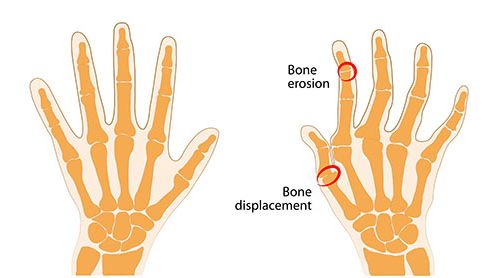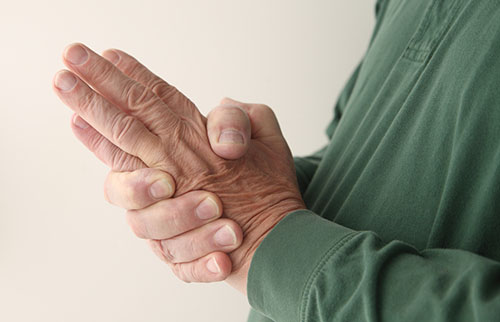| What is Ulnar Deviation?8 August 2017 | Eugene Most common wrist conditions tend to be subtle, with many symptoms in common and few distinctive factors for the layman to decipher. Arthritis, carpal tunnel syndrome, and many others are characterised by minor pains, with little deformity to the eye. Ulnar Deviation is not such a condition. With symptoms readily available to the eye and causing major deficits to daily life, this is a condition that should be acknowledged and, when diagnosed, treated immediately. What is Ulnar Deviation?Ulnar Deviation, also known as ulnar drift, is a hand condition that occurs when your knuckle bones, or metacarpophalangeal (MCP) joints, become more and more swollen over time. This swelling then causes your fingers to bend toward your little finger, causing an unsightly deformity. The condition gets its name due to the side of the hand that the fingers bend towards, which is towards the ulna bone on the little-finger side of your forearm. The condition won't immediately prevent you from going about your daily tasks, but, when left untreated for an extended period of time, movements that were once easy may suddenly become more difficult, and even painful.
Bone erosion and displacement leading to an Ulnar Deviation Symptoms of Ulnar DeviationWhile the bending of the fingers toward the ulnar side of the hand that Ulnar Deviation eventually causes can be difficult to miss, during its development, symptoms may be a little harder to spot. It usually begins with a swelling of the knuckles, and, as it progresses, these symptoms may also start to appear:
Since Ulnar Deviation is also often associated with other conditions, most commonly rheumatoid arthritis, it's also worth noting some symptoms that may be inherited due to a combination of conditions. These include:
Causes of Ulnar DeviationUlnar Deviation is a condition that very rarely occurs alone. Most commonly, it is known as a secondary condition that occurs as a result of rheumatoid arthritis (RA). RA is an autoimmune disorder, resulting in your immune system attacking the tissue of the joint, causing inflammation and subsequent damage. Over time, the MCP joint and bones can start to erode, making way for the hand deformity known as Ulnar Deviation. For more information about rheumatoid arthritis, read our article on the subject. Osteoarthritis (OA) is also known to cause Ulnar Deviation, though less frequently. OA isn't caused by the immune system, but instead by normal wear and tear of your joints and cartilage over time. This could happen due to age, overuse or injury. Some other causes of Ulnar Deviation include:
Ulnar Deviation in the hand resulting from osteoarthritis Treatment of Ulnar DeviationSince Ulnar Deviation is often based on chronic underlying conditions, treatment tends to focus on controlling the symptoms and maintaining quality of life. The underlying swelling can often be treated by anti-inflammatory drugs, which will also take care of a significant portion of pain. Depending on the severity of your condition, hand and wrist exercises may also help to manage symptoms by strengthening the surrounding muscles and ligaments to support the injured joints. Hot or cold therapies can also be effective, increasing range of movement and helping to decrease swelling. As with all other treatments, we recommend consulting your physician before undertaking any therapeutic measures. Splints and Braces to Control Ulnar DeviationFor many sufferers of Ulnar Deviation, a splint may help to prevent the deviation from becoming any more pronounced. These splints include:
To see our full range of Wrist Supports for Ulnar Deviation, click the yellow button below. Do you have a question to ask or something to add? Why not leave us a comment below or find us on Facebook or Twitter. |
FREE UK DELIVERYon orders of £40 and over. EXPERT CUSTOMER SUPPORTRead our reviews. EASY PRODUCT RETURNSwith our 30 day returns policy. |


